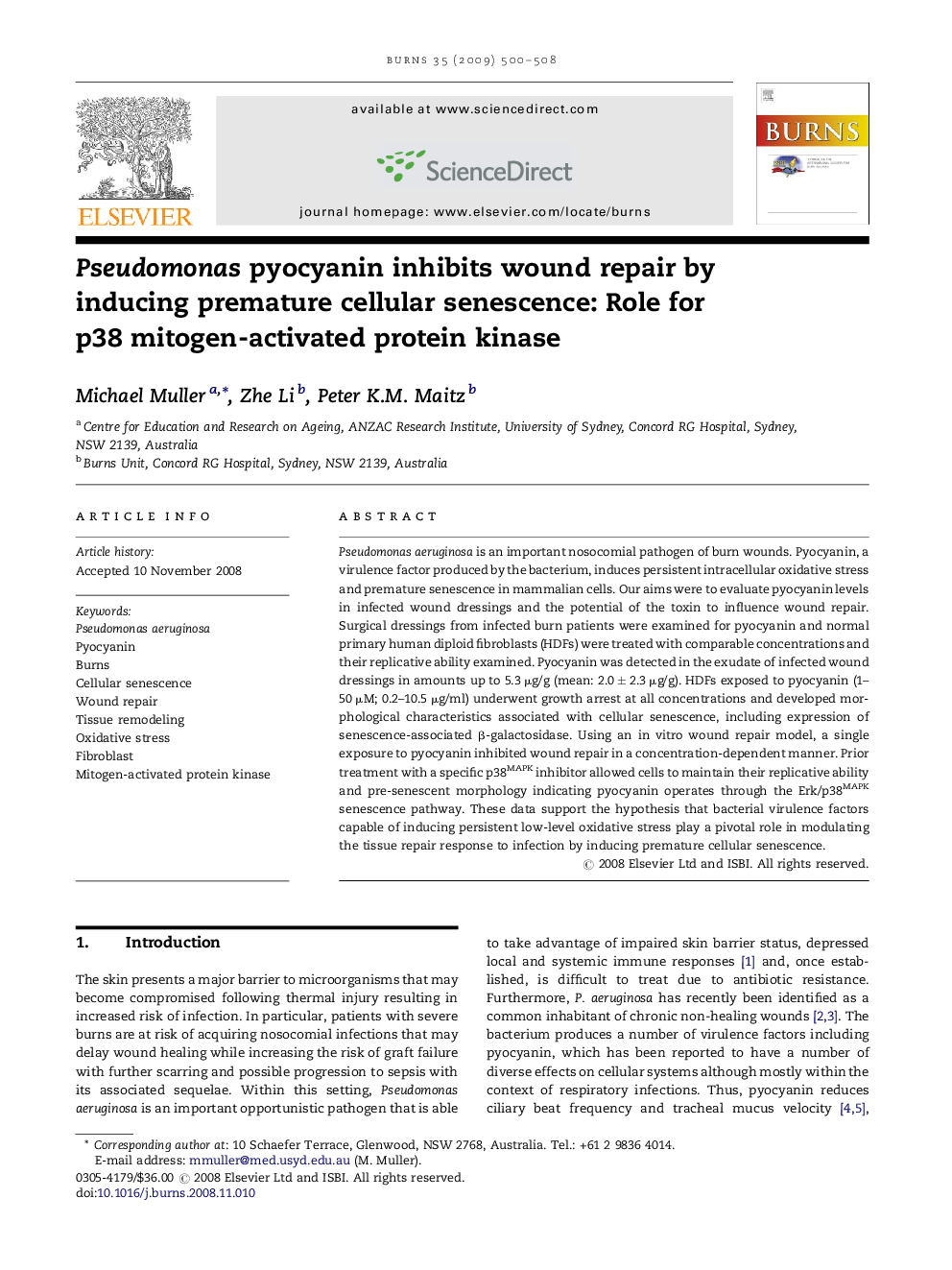| Article ID | Journal | Published Year | Pages | File Type |
|---|---|---|---|---|
| 3106556 | Burns | 2009 | 9 Pages |
Pseudomonas aeruginosa is an important nosocomial pathogen of burn wounds. Pyocyanin, a virulence factor produced by the bacterium, induces persistent intracellular oxidative stress and premature senescence in mammalian cells. Our aims were to evaluate pyocyanin levels in infected wound dressings and the potential of the toxin to influence wound repair. Surgical dressings from infected burn patients were examined for pyocyanin and normal primary human diploid fibroblasts (HDFs) were treated with comparable concentrations and their replicative ability examined. Pyocyanin was detected in the exudate of infected wound dressings in amounts up to 5.3 μg/g (mean: 2.0 ± 2.3 μg/g). HDFs exposed to pyocyanin (1–50 μM; 0.2–10.5 μg/ml) underwent growth arrest at all concentrations and developed morphological characteristics associated with cellular senescence, including expression of senescence-associated β-galactosidase. Using an in vitro wound repair model, a single exposure to pyocyanin inhibited wound repair in a concentration-dependent manner. Prior treatment with a specific p38MAPK inhibitor allowed cells to maintain their replicative ability and pre-senescent morphology indicating pyocyanin operates through the Erk/p38MAPK senescence pathway. These data support the hypothesis that bacterial virulence factors capable of inducing persistent low-level oxidative stress play a pivotal role in modulating the tissue repair response to infection by inducing premature cellular senescence.
